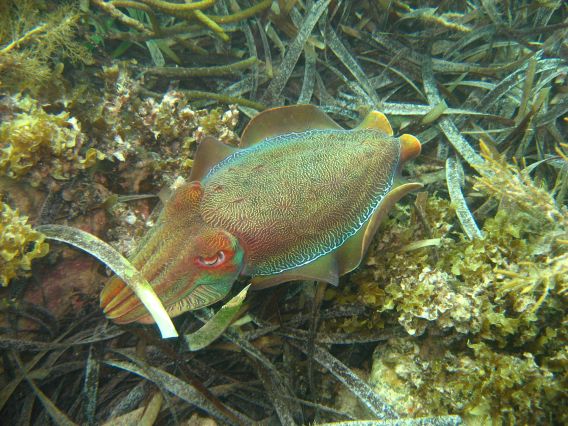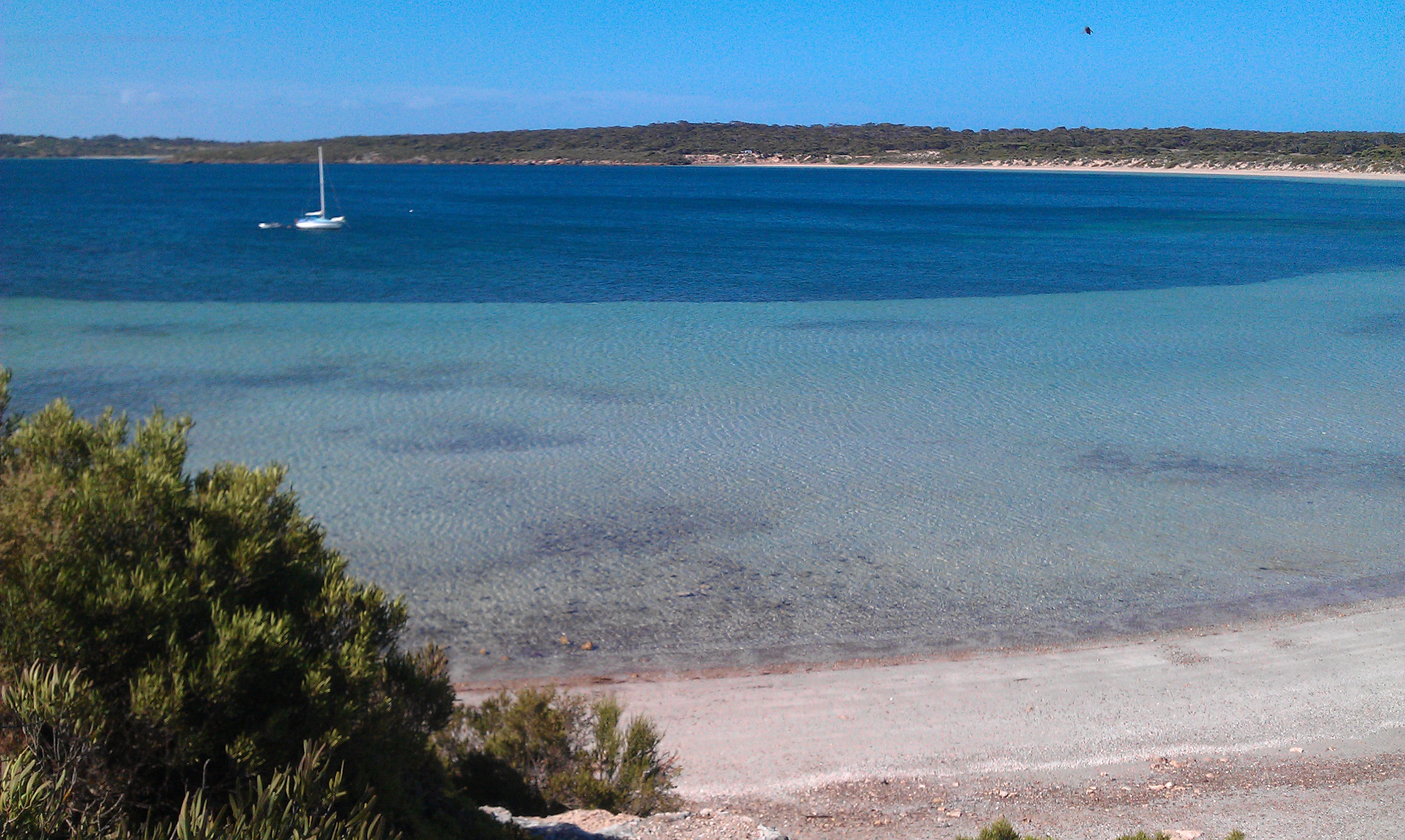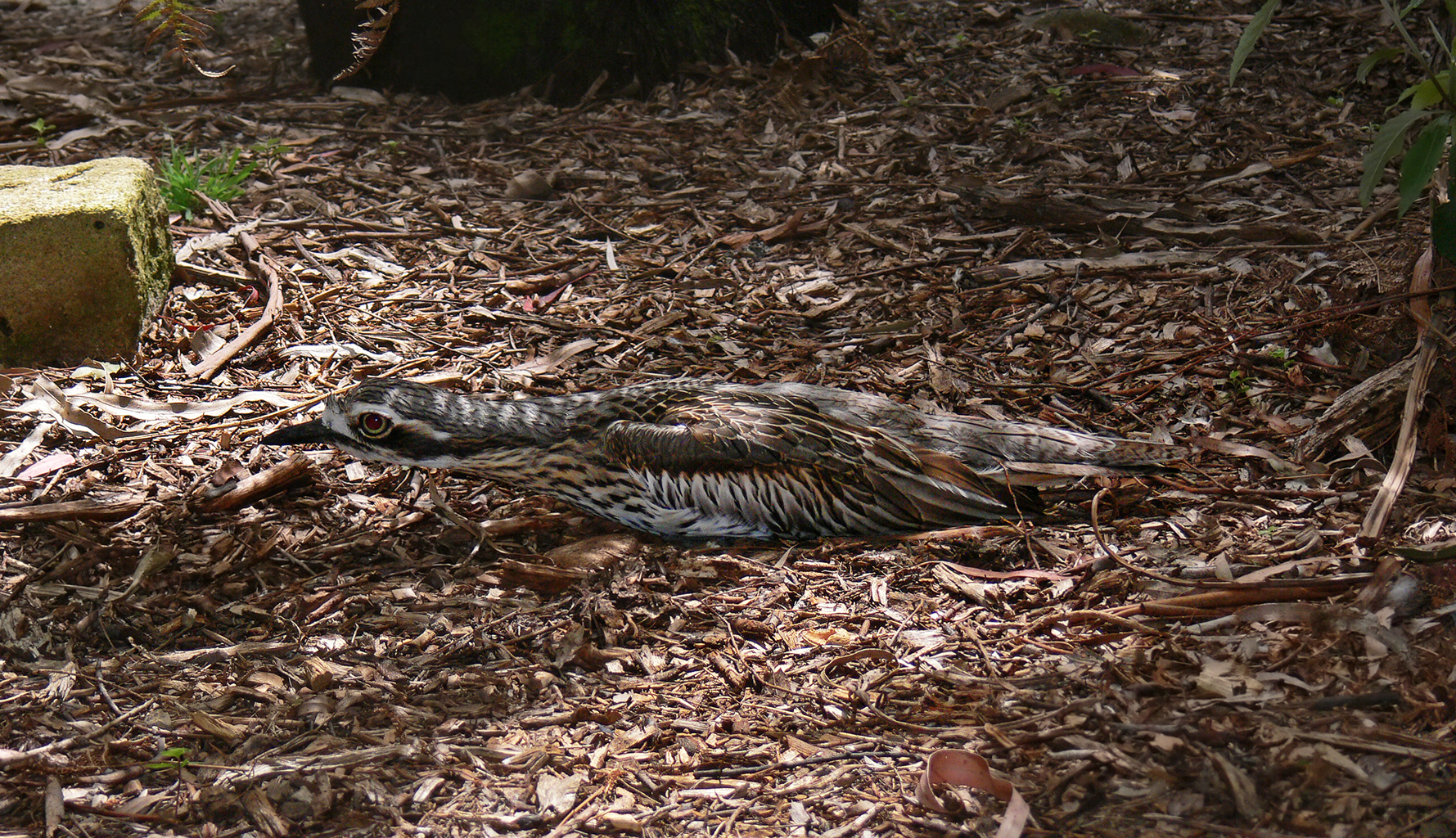|
Rabbit Island (South Australia)
Rabbit Island is a rarely visited island located in Louth Bay, Spencer Gulf, South Australia. It also bears the historic French name of Ile Raynal. Unlike the larger, privately owned Louth Island which sits to the north-west, Rabbit Island is public land and part of the Lincoln National Park. A diversity of native flora and fauna species have been recorded on the island. Flora and fauna Little penguins have been observed nesting on Rabbit Island, but the size and status of the colony is unknown. Species of conservation concern listed under the ''National Parks and Wildlife Act 1972'' which have been recorded on the island include the fairy tern (listed as endangered) and the bush stone-curlew, Cape Barren goose, sooty oystercatcher and rock parrot (listed as rare). See also *List of little penguin colonies This is a list of little penguin colonies notable for their size, location or public profile. It is not exhaustive. Some little penguin (''Eudyptula minor'') colonies a ... [...More Info...] [...Related Items...] OR: [Wikipedia] [Google] [Baidu] |
Spencer Gulf
The Spencer Gulf is the westernmost and larger of two large inlets (the other being Gulf St Vincent) on the southern coast of Australia, in the state of South Australia, facing the Great Australian Bight. It spans from the Cape Catastrophe and Eyre Peninsula in the west to Cape Spencer and Yorke Peninsula in the east. The largest towns on the gulf are Port Lincoln, Whyalla, Port Pirie, and Port Augusta. Smaller towns on the gulf include Tumby Bay, Port Neill, Arno Bay, Cowell, Port Germein, Port Broughton, Wallaroo, Port Hughes, Port Victoria, Port Rickaby, Point Turton, and Corny Point. History The first recorded exploration of the gulf was that of Matthew Flinders in February 1802. Flinders navigated inland from the present location of Port Augusta to within of the termination of the water body. The gulf was named ''Spencer's Gulph'' by Flinders on 20 March 1802, after George John Spencer, the 2nd Earl Spencer. The Baudin expedition visited the gulf after Flind ... [...More Info...] [...Related Items...] OR: [Wikipedia] [Google] [Baidu] |
Louth Bay
Louth Bay (formerly Laurence) is a town and locality in the Australian state of South Australia. It is named after the bay named by Matthew Flinders on 26 February 1802 which itself is derived from a place in Lincolnshire. At the 2006 census, Louth Bay had a population of 408. A town was surveyed in March 1909 and proclaimed on 24 June 1909. It was named 'Laurence' after Laurence O'Loughlin, a South Australian politician. In November 1940, the District Council of Lincoln formally endorsed a recommendation to rename the town 'Louth Bay' in order to be in line with common use. The name change was gazetted on 20 February 1941. Boundaries were created in October 2003 for a locality with the name 'Louth Bay and which included the site of Government Town of Louth Bay. Louth Island is a large privately owned island located within Louth Bay. 3 km to the south east of Louth Island lies the smaller Rabbit Island, which is part of the Lincoln National Park. History The bay was a ... [...More Info...] [...Related Items...] OR: [Wikipedia] [Google] [Baidu] |
South Australia
South Australia (commonly abbreviated as SA) is a state in the southern central part of Australia. It covers some of the most arid parts of the country. With a total land area of , it is the fourth-largest of Australia's states and territories by area, and second smallest state by population. It has a total of 1.8 million people. Its population is the second most highly centralised in Australia, after Western Australia, with more than 77 percent of South Australians living in the capital Adelaide, or its environs. Other population centres in the state are relatively small; Mount Gambier, the second-largest centre, has a population of 33,233. South Australia shares borders with all of the other mainland states, as well as the Northern Territory; it is bordered to the west by Western Australia, to the north by the Northern Territory, to the north-east by Queensland, to the east by New South Wales, to the south-east by Victoria, and to the south by the Great Australian Bight.M ... [...More Info...] [...Related Items...] OR: [Wikipedia] [Google] [Baidu] |
Louth Island
Louth Island ( Nauo: ''Jorunu'' or ''Yoruna'') is a 135 ha island located in Louth Bay, Spencer Gulf, South Australia. The island is privately owned, and has previously been used for the grazing of sheep and mining of guano. The island has an old building with sleeping quarters, several beaches, inshore rocky reef and a boat anchorage. It is 17.5 km NNE of Port Lincoln and is easily accessible by boat. The indigenous name for the island is ''Yorunu''. Ownership & development In January 1861, a sheep which had been grazing on Louth Island for three years demonstrated remarkable growth of wool. One sample showed a staple twelve inches long, and its fleece was said to have weighed 24 lbs. At the time, the island and its stock were in the custody of Captain Bishop of Port Lincoln. In the late 1800s, Louth Island was in the custody of Alexander Watherston. In the early 1900s, waters around Louth Island were dredged for oysters. On October 13, 1905, William Watherstone, ... [...More Info...] [...Related Items...] OR: [Wikipedia] [Google] [Baidu] |
Lincoln National Park
Lincoln National Park is a protected area in the Australian state of South Australia located about west of the state capital of Adelaide and about south of the municipal seat of Port Lincoln. It consists of a mainland area on the Jussieu Peninsula on the south eastern tip of Eyre Peninsula and a number of nearby islands. The national park contains significant sites of natural, indigenous and early European heritage. Description Lincoln National Park is located on the Jussieu Peninsula on the south-eastern tip of Eyre Peninsula in South Australia as well as an adjoining portion of Eyre Peninsula and a number of islands adjoining the coastline. The part of the national park located on Jussieu Peninsula is located within the gazetted localities of Lincoln National Park and Sleaford. Jussieu Peninsula Lincoln National Park occupies the majority of Jussieu Peninsula. The remainder of the Jussieu Peninsula is occupied by the Memory Cove Wilderness Protection Area. The wester ... [...More Info...] [...Related Items...] OR: [Wikipedia] [Google] [Baidu] |
Little Penguin
The little penguin (''Eudyptula minor'') is a species of penguin from New Zealand. They are commonly known as little blue penguins or blue penguins owing to their slate-blue plumage and are also known by their Māori name . The Australian little penguin (''Eudyptula novaehollandiae'') from Australia and the Otago region of New Zealand is considered a separate species by a 2016 study and a 2019 study. Taxonomy The little penguin was first described by German naturalist Johann Reinhold Forster in 1781. Several subspecies are known, but a precise classification of these is still a matter of dispute. The holotypes of the subspecies ''E. m. variabilis'' and ''Eudyptula minor chathamensis'' are in the collection of the Museum of New Zealand Te Papa Tongarewa. The white-flippered penguin (''E. m. albosignata'' or ''E. m. minor morpha albosignata'') is currently considered by most taxonomists to be a colour morph or subspecies of ''Eudyptula minor.'' In 2008, Shirihai treated th ... [...More Info...] [...Related Items...] OR: [Wikipedia] [Google] [Baidu] |
National Parks And Wildlife Act 1972
Protected areas of South Australia consists of protected areas located within South Australia and its immediate onshore waters and which are managed by South Australian Government agencies. As of March 2018, South Australia contains 359 separate protected areas declared under the ''National Parks and Wildlife Act 1972'', the ''Crown Land Management Act 2009'' and the ''Wilderness Protection Act 1992'' which have a total land area of or 21.5% of the state's area. Jurisdiction The jurisdiction for legislation of protected areas within South Australia and the immediate onshore waters known officially as ‘the coastal waters and waters within the limits of South Australia' belongs to the South Australian government. The major piece of legislation concerned with the creation and the subsequent management of protected areas is the ''National Parks and Wildlife Act 1972''. Protected areas created by this Act form the majority of South Australia’s contribution to the National Re ... [...More Info...] [...Related Items...] OR: [Wikipedia] [Google] [Baidu] |
Fairy Tern
The fairy tern (''Sternula nereis'') is a small tern which is native to the southwestern Pacific. It is listed as " Vulnerable" by the IUCN and the New Zealand subspecies is " Critically Endangered". There are three subspecies: * Australian fairy tern, ''Sternula nereis nereis'' (Gould, 1843) – breeds in Australia * New Caledonian fairy tern, ''Sternula nereis exsul'' ( Mathews, 1912) – breeds in New Caledonia * New Zealand fairy tern, ''Sternula nereis davisae'' ( Mathews & Iredale, 1913) – breeds in northern New Zealand Description The fairy tern is a small tern with a white body and light bluish-grey wings.A small black patch extends no further than the eye and not as far as the bill. In the breeding plumage both the beak and the legs are yellowish-orange. During the rest of the year the black crown is lost, being mostly replaced by white feathers, and the beak becomes black at the tip and the base. The sexes look alike and the plumage of immature birds is similar ... [...More Info...] [...Related Items...] OR: [Wikipedia] [Google] [Baidu] |
Bush Stone-curlew
The bush stone-curlew or bush thick-knee, also known as the Iben bird (''Burhinus grallarius'', obsolete name ''Burhinus magnirostris'') is a large, ground-dwelling bird endemic to Australia. Its favoured habitat is open plains and woodlands, where it stalks slowly at night in search of invertebrates such as insects. Its grey-brown coloration is distinguished by dark streaks, its eyes are large and legs are long. It is capable of flight, but relies on the camouflage of its plumage to evade detection during the day; the bush curlew adopts a rigid posture when it becomes aware of an observer. Both sexes care for two eggs laid on the bare ground, usually sited near bush in a shaded position or next to a fallen branch. Taxonomy The bush stone-curlew was first described by English ornithologist John Latham in 1801 under the binomial name ''Charadius grallarius''. Latham published three names simultaneously; however, the seniority of ''C. grallarius'' follows the publication of the nam ... [...More Info...] [...Related Items...] OR: [Wikipedia] [Google] [Baidu] |
Cape Barren Goose
The Cape Barren goose (''Cereopsis novaehollandiae'') is a large goose resident in southern Australia. Etymology The species' common name is derived from Cape Barren Island, where specimens were first sighted by European explorers. It is known in the local Jardwadjali language as ''toolka''. Taxonomy The Cape Barren goose was first described by English ornithologist John Latham in 1801 under the current binomial name. It is a most peculiar goose of uncertain affiliations (Sraml ''et al.'' 1996). It may either belong in the "true geese" and swan subfamily Anserinae or in the shelduck subfamily Tadorninae as distinct tribe Cereopsini, or be separated, possibly including the prehistorically extinct flightless New Zealand geese of the genus ''Cnemiornis'', in a distinct subfamily Cereopsinae. The first bones of the New Zealand birds to be discovered were similar enough to those of the Cape Barren goose to erroneously refer to them as "New Zealand Cape Barren goose" (''"Cereopsis" n ... [...More Info...] [...Related Items...] OR: [Wikipedia] [Google] [Baidu] |
Sooty Oystercatcher
The sooty oystercatcher (''Haematopus fuliginosus'') is a species of oystercatcher. It is a wading bird endemic to Australia and commonly found on its coastline. It prefers rocky coastlines, but will occasionally live in estuaries. All of its feathers are black. It has a red eye, eye ring and bill, and pink legs. Taxonomy John Gould described the sooty oystercatcher in 1845. Its species name is the Latin adjective ''fuliginosus'', "sooty". Two subspecies are recognised, the nominate from the coastline of southern Australia and subspecies ''ophthalmicus'' from northern Australia. The southern subspecies is larger and heavier than the northern. The northern one, with a more yellowish eye ring, is found from the Kimberleys across the top of the country to Mackay in central Queensland. There is considerable overlap, as the southern subspecies has been found up to Cape York. Subspecies ''ophthalmicus'' has been thought distinctive enough to warrant species status and needs further inv ... [...More Info...] [...Related Items...] OR: [Wikipedia] [Google] [Baidu] |
Rock Parrot
The rock parrot (''Neophema petrophila'') is a species of grass parrot native to Australia. Described by John Gould in 1841, it is a small parrot long and weighing with predominantly olive-brown upperparts and more yellowish underparts. Its head is olive with light blue forecheeks and lores, and a dark blue frontal band line across the crown with lighter blue above and below. The sexes are similar in appearance, although the female tends to have a duller frontal band and less blue on the face. Two subspecies are recognised. Rocky islands and coastal dune areas are the preferred habitats for this species, which is found from Lake Alexandrina in southeastern South Australia westwards across coastal South and Western Australia to Shark Bay. Unlike other grass parrots, it nests in burrows or rocky crevices mostly on offshore islands such as Rottnest Island. Seeds of grasses and succulent plants form the bulk of its diet. The species has suffered in the face of feral mammals; a ... [...More Info...] [...Related Items...] OR: [Wikipedia] [Google] [Baidu] |







